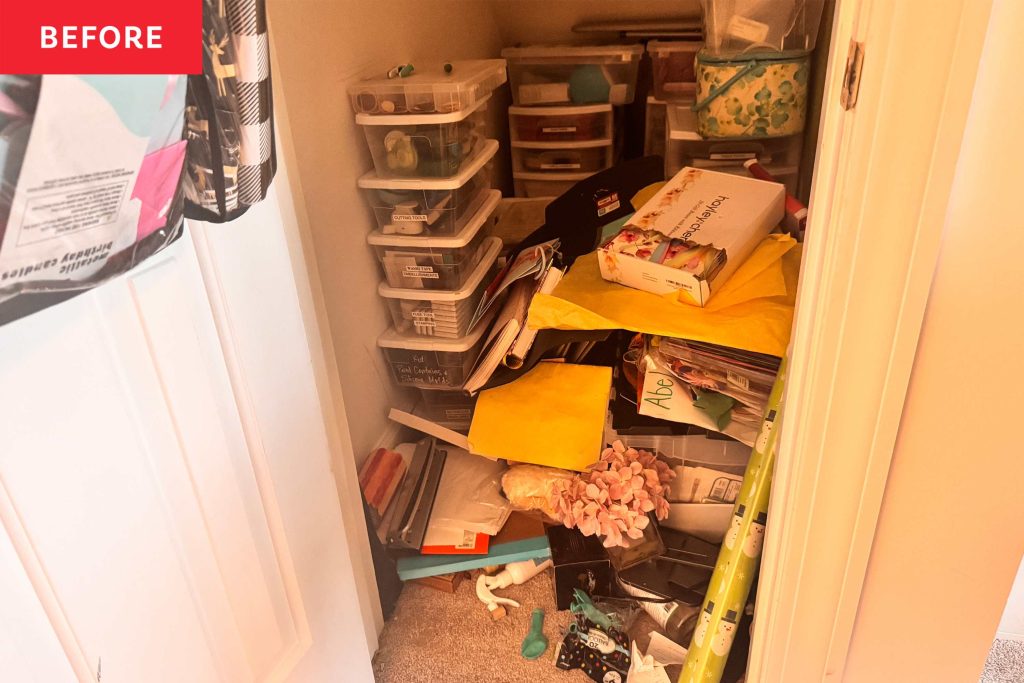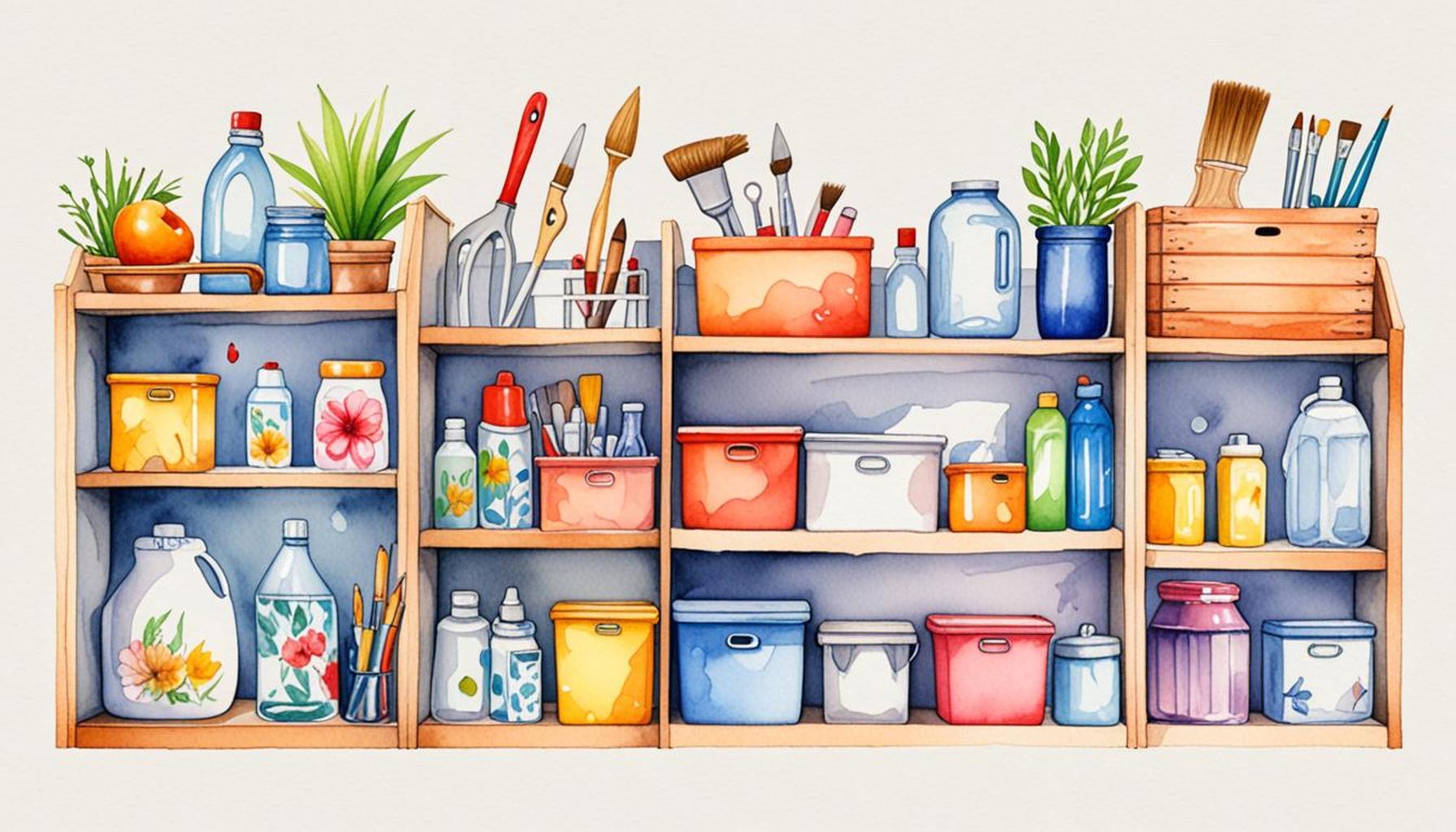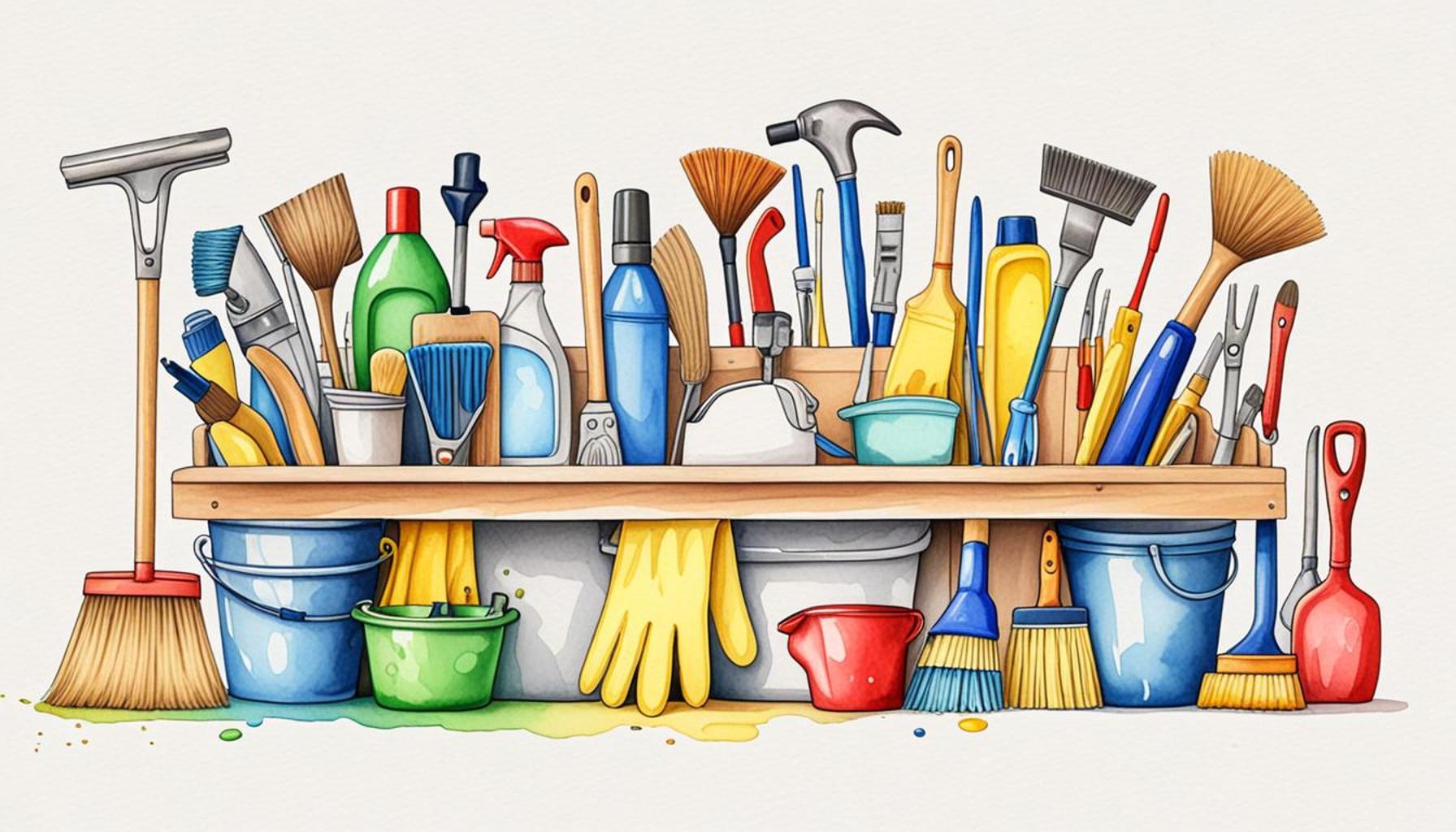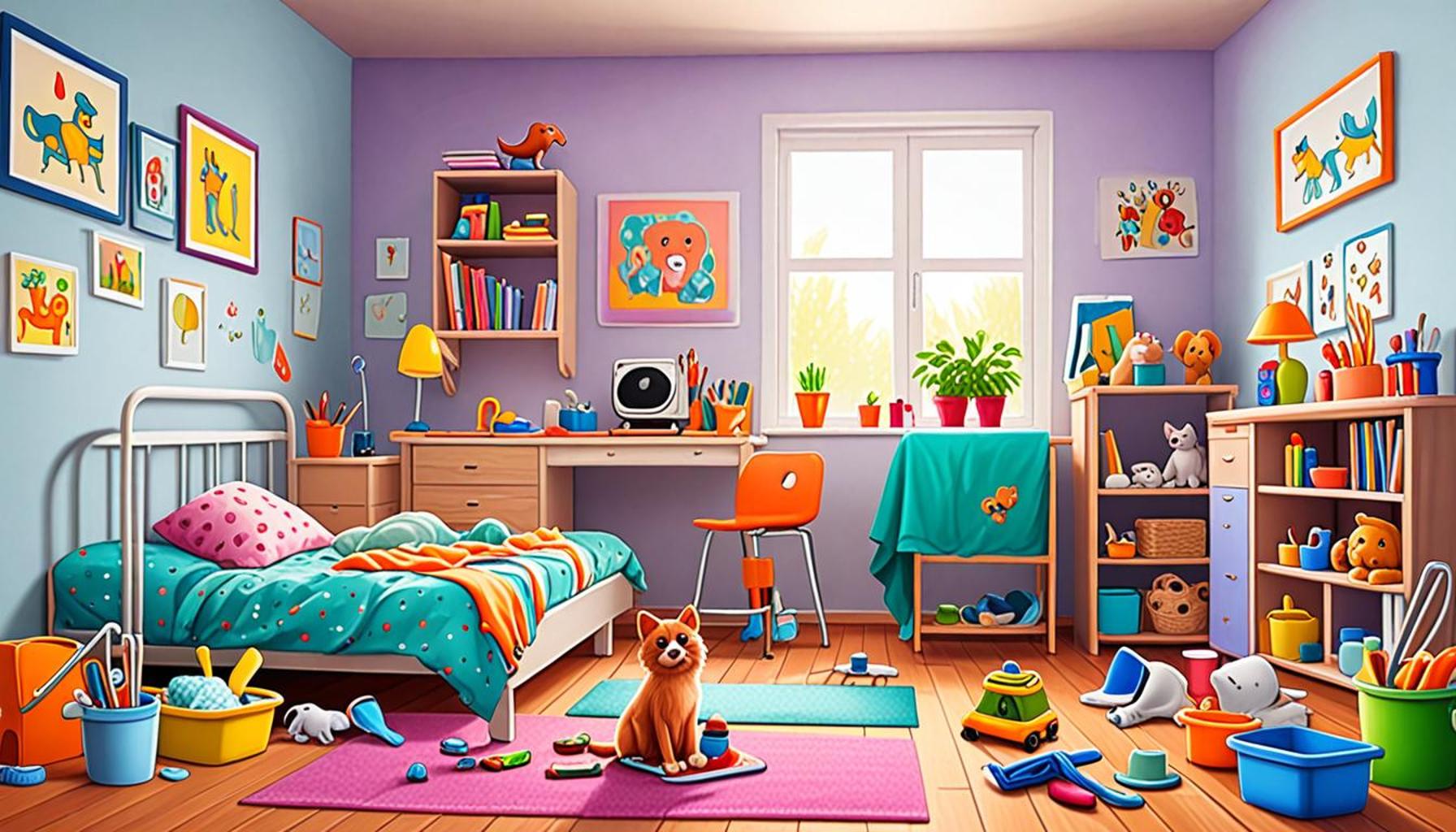How to Use Minimalism Techniques to Facilitate Cleaning and Organizing Your Home

Discovering the Art of Minimalism in Everyday Life
As the whirlwind of modern life continues to speed up, many find themselves overwhelmed by the sheer volume of possessions and distractions surrounding them. Embracing minimalism can serve as a powerful antidote to this chaos, transforming not just your living space but your entire outlook on life. At its core, minimalism is a deliberate approach that favors simplicity and intentionality, encouraging individuals to let go of the excess and focus on what truly matters.
Implementing minimalism necessitates a shift in mindset alongside practical techniques. To guide you on this journey, consider the following essential practices:
- Decluttering: Begin by conducting a thorough inventory of your belongings. Evaluate each item based on its utility and emotional significance. For instance, if you haven’t worn that shirt in over a year, it may be time to part with it. This process can be both liberating and eye-opening, revealing how much weight our possessions can hold.
- Designating Spaces: Create dedicated areas within your home for specific categories of items. Whether it’s books, kitchen supplies, or personal items, having a designated space for everything simplifies tidying up. This not only makes for a tidy environment but significantly reduces the time spent searching for misplaced belongings.
- Quality Over Quantity: Shift your purchasing mindset from acquiring numerous inexpensive items to investing in fewer, high-quality products. This approach is especially relevant in the United States, where the prevalence of discount stores can lead to hoarding cheap goods that quickly deteriorate. Instead, consider investing in a few timeless classics, whether it’s a durable piece of furniture or a set of well-crafted cookware that will stand the test of time.
These techniques contribute not only to a streamlined cleaning routine but also foster a harmonious living environment. A minimalist home acts as a sanctuary, inviting calmness and clarity into daily life. When we reduce physical clutter, we often find that it leads to a corresponding reduction in mental clutter.
Exploring minimalism opens the door to profound insights about your needs versus your wants. Throughout this journey, you may discover innovative strategies that allow you to maintain order in an effortless manner. For example, the 30-Day Minimalism Game encourages participants to declutter one item on the first day, two on the second day, and so on, challenging them to let go of 465 items in just a month. Such challenges can invigorate your commitment to minimalism and create exciting conversations about your evolving lifestyle.
By delving deeper into minimalism, you might find new ways to enrich your life, create lasting memories, and cultivate meaningful experiences rather than simply accumulating possessions. Join us in further exploring the transformative effects of minimalism on home cleaning and organizing and discover how it can bring a newfound peace to your life.

DON’T MISS: Click here for eco-friendly cleaning solutions
Embracing Minimalism to Transform Your Home
Implementing minimalism in your home isn’t merely about reducing the number of possessions; it’s about creating a life that reflects your values and priorities. To facilitate a meaningful cleaning and organizing routine, consider integrating these minimalist techniques into your daily life. Each approach empowers you to maintain an orderly environment while allowing you to focus on what matters most.
Prioritize Functionality
The first step in achieving a clutter-free home is to prioritize functionality. Each item in your living space should serve a purpose. Before bringing a new item into your home, ask yourself: “Do I really need this? Will it improve my daily life?” This conscious consideration helps to minimize impulse purchases that lead to excess clutter. For instance, if an item serves multiple purposes, like a quality, multifunctional kitchen gadget, you’re not only saving space but also enhancing productivity.
Adopt a One-In-One-Out Rule
An effective rule to implement is the one-in-one-out principle. The concept is simple: every time you acquire a new item, you must let go of an old one. This approach can significantly decrease the accumulation of belongings over time. By practicing this habit, you develop a heightened awareness of your consumption patterns. For example, if you buy a new pair of shoes, consider donating or selling an old pair that you no longer wear. Consistently executing this rule helps keep your space tidy and manageable.
Visually Declutter Surfaces
One of the easiest ways to create a sense of calm in your home is to visually declutter surfaces. Start with the most high-traffic areas: tables, countertops, and shelves. Aim to keep these surfaces clear of unnecessary items by establishing a simple habit of returning things to their designated spaces after use. For example, if you set down your keys on the kitchen counter, make it a point to create a dedicated hook or bowl by the entrance to store them. This small adjustment can dramatically reduce visual noise and make cleaning effortless.
Utilize Organizational Tools Wisely
In the realm of minimalism, less is often more, but the right organizational tools can be game-changers. Baskets, bins, and drawer organizers can be your best friends on the journey toward a more orderly home. When purchasing organizational solutions, opt for those that are sleek and simple, aligning with your minimalist aesthetic. Categorize items to maintain coherence; for instance, use labeled bins for seasonal décor, extra linens, or office supplies. This classification not only streamlines cleaning but also allows you to find what you need with ease.
Set a Regular Decluttering Schedule
Finally, establish a regular schedule for decluttering. Committing to this routine—even if just once a month—ensures that your home doesn’t fall victim to accumulating excess once again. Taking time to revisit each area of your home seasonally can prevent the clutter from regaining control over your living space. Create a checklist of areas to target and gradually work through them, building a practice that becomes second nature.
Incorporating these minimalist techniques not only makes cleaning and organizing your home simpler but also cultivates a sense of peace and intentionality. By embracing fewer possessions and promoting functionality, you’re taking meaningful strides toward creating a harmonious space that you can truly enjoy.
Exploring Minimalism Techniques for Effective Organization
Incorporating minimalism techniques into your cleaning and organizing routine can lead to a streamlined and efficient home environment. The concept of minimalism is not just about getting rid of excess items; it is about creating a space that reflects clarity and tranquility. Here are some strategies to implement minimalism effectively in your home.
1. The Fifty-Item Challenge
One popular minimalism technique encourages you to limit your possessions to a certain number. For instance, the fifty-item challenge involves assessing and drastically reducing your belongings across various categories, such as clothing, books, and kitchen gadgets. This exercise not only leads to a more organized space but also instills a habit of mindful consumption.
2. One In, One Out Rule
The one in, one out rule is a simple yet effective strategy. Whenever you acquire a new item, commit to removing an existing one. This practice prevents clutter from building up over time and enables you to keep only what is necessary and cherished.
3. Declutter Regularly
Set aside a specific time weekly or monthly to declutter your home. Identifying items that no longer serve a purpose can make a significant difference. This regular practice ensures that your living space remains organized and that you stay aware of your belongings.
4. Create Designated Spaces
Establishing designated spaces for every item is a crucial aspect of minimalism. By creating ‘homes’ for your belongings, you can easily return items to their place after use, which can vastly reduce clutter.
5. Utilize Vertical Space
Vertical organization is key in minimalist homes. Use shelves, hooks, and cabinets to free up horizontal surfaces. This not only enhances organization but also makes cleaning faster, as surfaces can be wiped down without the need to move items around.By applying these minimalism techniques, you will not only facilitate cleaning and organizing your home but also cultivate a peaceful atmosphere where every piece contributes to your overall well-being. Engaging in these practices creates a lifestyle that values simplicity over excess, enhancing both your space and mental clarity. As you delve deeper into minimalism, consider how each change can lead to a more harmonious living environment.
DIVE DEEPER: Click here to learn more
Creating Sustainable Cleaning Habits
As you delve deeper into minimalism, it becomes essential to establish sustainable cleaning habits that promote a consistently tidy home. The journey toward minimalism is not merely a one-time event; it’s an ongoing lifestyle choice that integrates cleaning and organization into your daily routine. Below are some actionable strategies to help you maintain a clean and organized space.
Embrace Daily Cleaning Rituals
Incorporating daily cleaning rituals into your routine can do wonders for sustaining order. Consider setting aside just 15-20 minutes each day to tackle small cleaning tasks. Focus on basic chores like wiping down countertops, sweeping floors, or simplifying your living spaces by returning items to their designated spots. This consistent attention minimizes the overwhelming nature of larger cleaning jobs and fosters a proactive mindset toward household maintenance. Think of it this way: by segmenting cleaning tasks into bite-sized pieces, you lessen the likelihood of clutter accumulation.
Utilize a “Cleaning Zone” Approach
The concept of a cleaning zone can streamline your organization efforts significantly. Start by dividing your home into different zones that can be tackled on different days. For example, designate Mondays for the kitchen, Tuesdays for the living room, and so on. This systematic approach allows you to focus your attention without feeling overwhelmed by the entirety of your living space. Moreover, a zone-focused cleaning routine enables you to identify which areas require more frequent attention and adjust accordingly.
Incorporate Natural Cleaning Solutions
Minimizing the number of cleaning products you own ties beautifully into minimalism. Opt for natural cleaning solutions like vinegar, baking soda, and essential oils, which can tackle a variety of household cleaning tasks without the clutter of a vast assortment of chemical products. Creating a simple cleaning kit with these eco-friendly substances lets you maintain your minimalist aesthetic while achieving a clean home. Not only do natural solutions reduce the number of bottles and supplies cluttering your cabinets, but they also promote a healthier living environment.
Practice Mindful Consumption
As you create a space that echoes minimalism, it’s crucial to embrace mindful consumption. This tenet extends beyond acquiring items and into how you engage with your environment. Commit to regularly assessing your belongings and understanding your emotional attachments to specific items. For example, if you find yourself holding onto several mugs, ask if each has a special meaning or is merely taking up space. By practicing mindful consumption, you give yourself permission to let go of items that no longer serve you, facilitating a cleaner and more organized home.
Invest in Quality Over Quantity
When it comes time to replace or refresh certain items in your home, remember the adage: quality over quantity. Invest in fewer, high-quality items that will not only last longer but also perform better. This approach applies to everything from furniture to kitchen tools. For example, replacing an entire array of cheap plastic containers with a single set of durable food storage solutions can transform both your storage capabilities and space aesthetics. Quality items bring greater satisfaction and reduce the need for excess clutter, allowing you to maintain your minimalist lifestyle.
By integrating these practical and mindful strategies into your cleaning and organizing habits, you can cultivate a home that not only looks organized but resonates with a sense of peace and purpose. Embracing minimalism requires commitment, but the rewards of a cleaner, more efficient living environment are well worth the effort.
DISCOVER MORE: Click here to find out more
Conclusion
In summary, embracing minimalism techniques for cleaning and organizing your home not only simplifies daily tasks but also enhances your overall living experience. By establishing daily cleaning rituals, utilizing a zone-based approach, and incorporating natural cleaning solutions, you can foster an inviting and tidy atmosphere with minimal effort. Moreover, practicing mindful consumption and investing in quality over quantity significantly reduces clutter and the burden of maintenance, allowing you to truly enjoy your space.
The journey toward a minimalist lifestyle is about more than just aesthetics; it embodies a profound shift in how we interact with our belongings and spaces. Reducing possessions opens room for mindfulness, peace, and a more intuitive approach to home management. By addressing emotional attachments and reevaluating needs, you empower yourself to create a peaceful sanctuary that reflects your values.
Ultimately, the transition to a minimalist home is an ongoing process; however, the benefits—ranging from increased clarity to reduced stress—are highly rewarding. As you continue to explore minimalism, you’ll discover enriching insights that contribute to a well-organized and inspiring environment. Dive deeper into minimalism and let it guide you on a path toward an organized home, illuminating the beauty of simplicity and intention in your everyday life.


